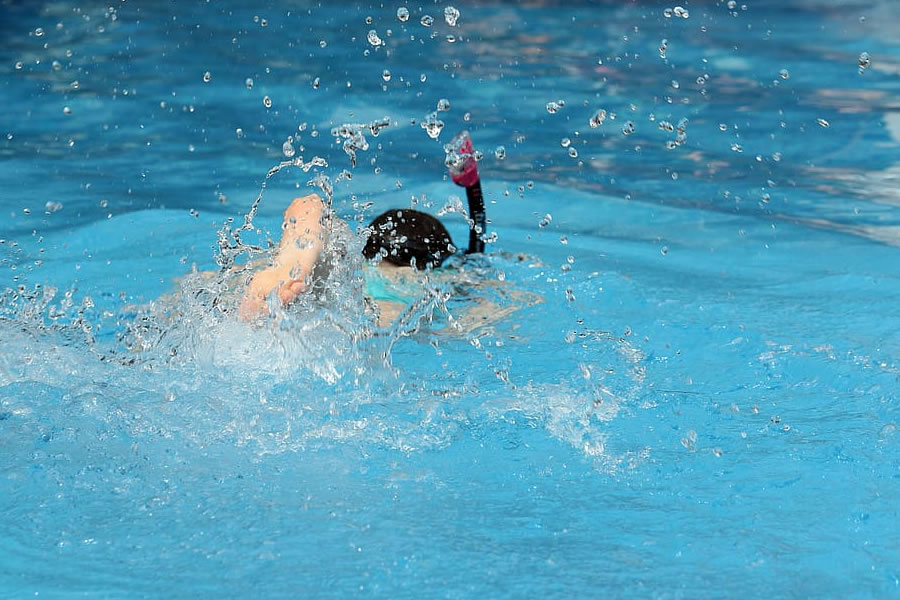🌎 Making A Splash: Essential Tips For Getting Into Finswimming And Cold Water Swimming

Since COVID-19 has spread across the globe people have been looking for new ways to escape the crowds. Well, if diving into an ice cold lake seems like a good way to get away, you’ll discover that finswimming and cold water swimming present exciting ways to explore nature. Come on in, the water’s fine!
Cold Water Fins
The main difference that cold water fins have over the warm water variety is that they’re built to accommodate various types of footwear that you’ll need to keep your feet warm. Whether you’ve got neoprene socks or a full body drysuit on, warm water fins tend to have a smaller package and you’ll struggle to fit them over any cold water footwear. Some find that a weighted fin can counteract the buoyancy of a drysuit and give you more control in the water.
Whatever fin you choose, here are our best tips for enjoying cold water swimming this season.
1) Choose A Neoprene Cap
Neoprene is an exceptionally good insulative material and donning a neoprene hat with a chin strap to keep it snug is the number one way to keep in the heat when you’re cold water swimming. Neoprene is the same material that triathletes and professional swimmers choose for open water environments – it’s a worthy investment to keep you warm.
2) Double Up On Caps
We lose most of our body heat out through our heads and when you’re cold water swimming it’s imperative to keep as much of that heat in as possible. Wearing two caps adds an extra layer of protection, and if your outer cap is made of neoprene you’ll be cosy warm.
3) Wear A Wetsuit
A wetsuit is a 100% essential piece of gear for cold water swimming and will make an enormous difference to your ability to preserve your body heat and maintain your core temperature throughout your swim. “In American Triathlons, any event where the water temperature is below 75°F allows wetsuits,” says Roger Shandy, a sports blogger at Writinity and LastMinuteWriting. “Take full advantage of this rule with a full body wetsuit, as the sleeveless suits enable a lot of heat to escape.”
4) Earplugs
Although at first glance the capacity for earplugs to keep you warm may not be obvious, actually these little nuggets prevent that cold water from entering your ear canal and cooling you down from the inside out. When the water gets cold, earplugs make a big difference.
5) Neoprene Socks
Just like at the other end of our body, our feet lose a lot of heat in a short amount of time so insulating these extremities is important to our overall temperature. A pair of neoprene socks will keep you cosy. However, if you’re a triathlete and jumping out of the water and onto the bike you might want to ditch your socks on race day – getting wet neoprene socks off your feet can be a time consuming challenge!
6) Get Warm Before You Take A Dip
“Once you hit the water your body is going to be battling against the cold, so give it the best chance it can have to stay warm with a long warm up before you take the plunge,” says Elise McKinnon, a health writer at Draftbeyond and Researchpapersuk. “Around fifteen minutes of cardio will do enough to raise your core temperature – this gives your body a head start once you’re in the cold water.”
7) Don’t Dive In
Diving into cold water can be a shock to your system, so much so that your body can go into shock as you hit the water. Unless you’re very experienced you need to dip your toes in, so to speak – walk into the water slowly to give your body a chance to acclimatise to the low temperatures.
Take The Plunge
Whether you’re an Iron Man or Woman taking on the world of triathlons or just looking to explore the outdoors in a new way this winter, cold water swimming is a (literally) breathtaking experience. Getting into cold water is demanding on your body but with the right gear and the right approach you can surprise yourself. Take the plunge!

Ashley Halsey is a professional writer at Bristol Writing Service and GumEssays.com and has been a journalist and travel writer for two decades. She loves hot cocoa after a long cold day.
Last Updated on December 2, 2020

